Journal entry 1: October 7, 2019
Jai Bhim, by Khushboo Srivastava
The first thing you notice on entering Ramabai Nagar is a statue of Bhim Rao Ambedkar, civil rights activist and responsible for drafting the Indian Constitution.
His photographs adorn the walls of several houses in the locality.
The salutation ‘Jai Bhim’ is inscribed in several public places throughout the neighbourhood as a testimony to residents’ hope that his ideals of humanity and emancipation would eventually prevail.
The space around the statue bustles with activity, as hawkers sell their wares, people walk through to get in and out of the neighbourhood and elderly residents sit reading newspapers and chat with one another.
Ramabai Nagar is a densely populated neighbourhood. Houses and shops jostle with one another, as children, cats and geese live side-by-side. Private clinics and ATMs are a common sight. The lanes separating rows of houses are just enough wide to allow one individual to walk through at a time.
Television antennae dot the rooftops suggesting that most houses have a TV connection.
Not every house has a toilet though, so residents use public toilets and bathe in the open. Places of worship that meet the religious needs of the neighbourhood’s Hindu, Muslim and Buddhist communities thrive in the neighbourhood, as do community halls maintained by the area’s diverse residents’ associations.
Children attend a private school (named after the founder of the Sikh faith) where the medium of instruction is English and which caters to low-income families.
The locality has two public parks.
An open-drain marks the boundary of the neighbourhood. It is literally a dumping ground where people of the neighbourhood feel free to dump their waste.
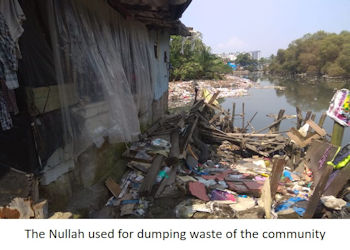
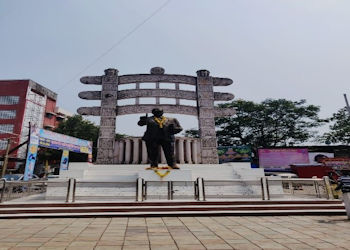
Ambedkar statue
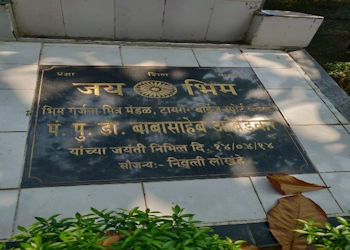
"Jai Bhim" plaque on tiled floor
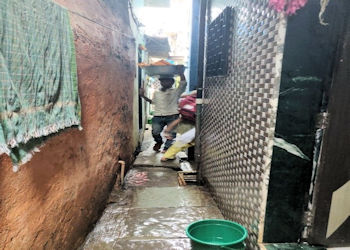
Narrow lanes
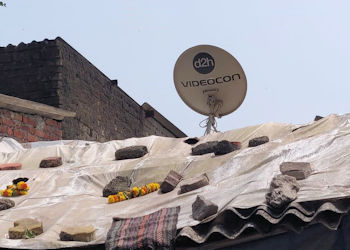
Dish antenna
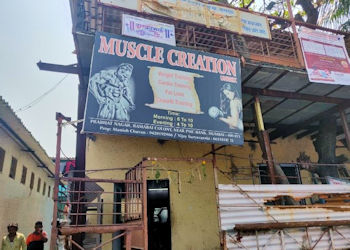
Gym in a house
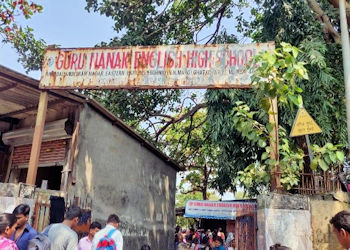
Guru Nanak English High School
